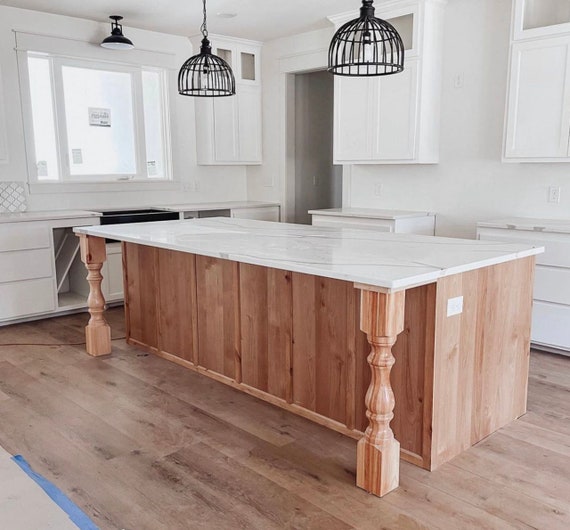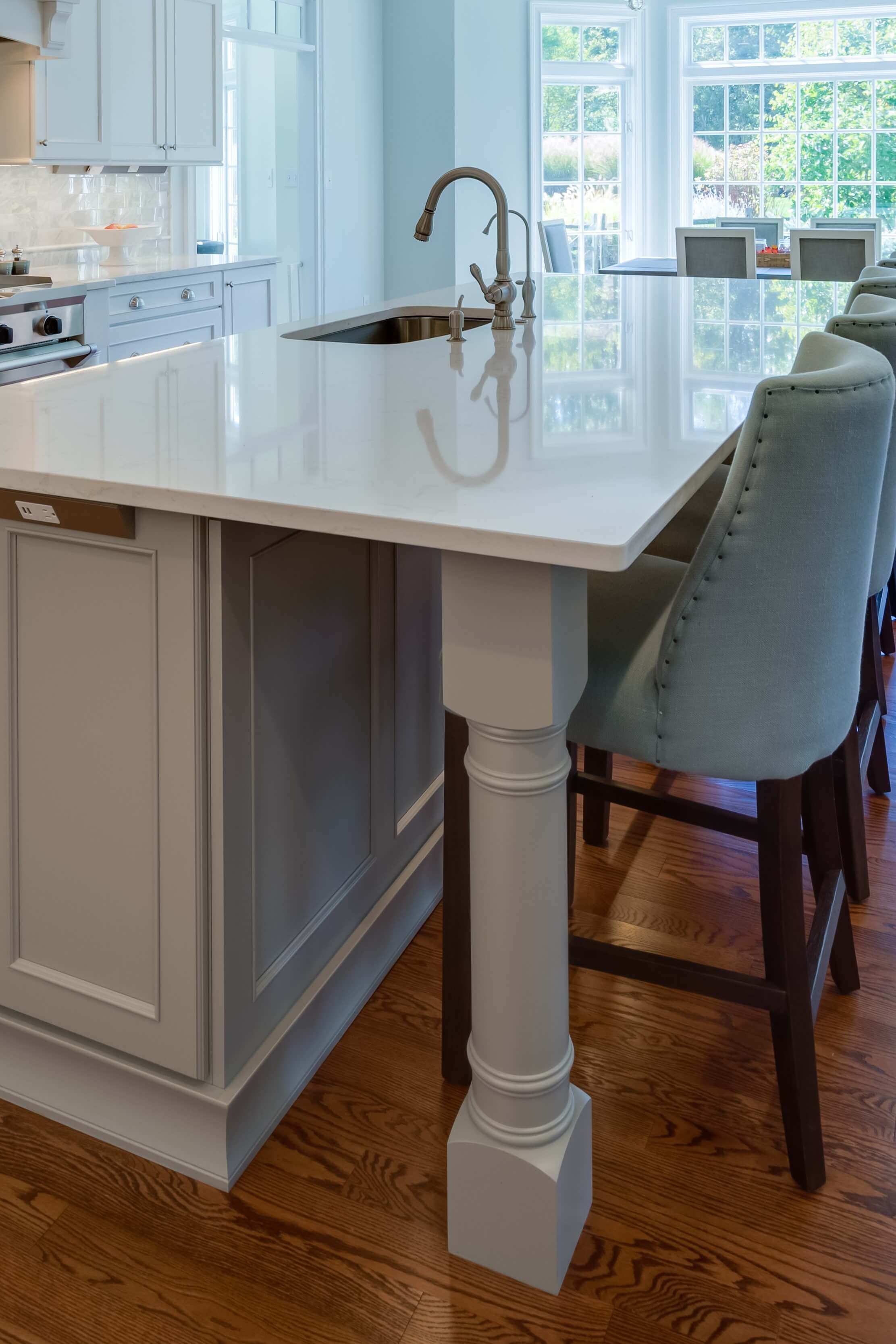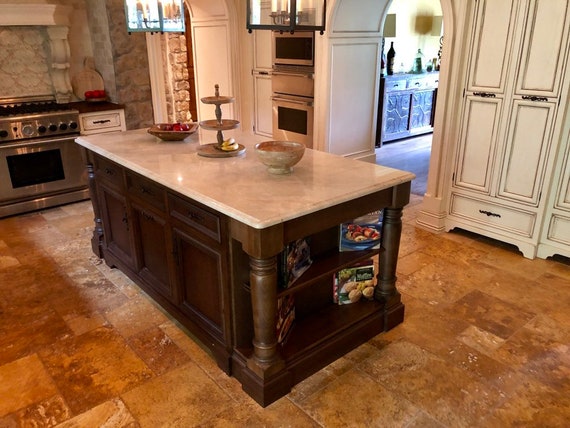Selecting the Perfect Kitchen Island Leg for Toughness and Functionality
Selecting the Perfect Kitchen Island Leg for Toughness and Functionality
Blog Article
Top Considerations When Picking a Kitchen Island Leg for Modern Kitchen Insides
In the world of modern kitchen area interiors, the option of a kitchen island leg is pivotal, influencing both appearances and performance. Secret considerations include the selection of materials that integrate with modern layout, as well as the leg's security and support to make certain enduring performance. Furthermore, elevation and percentages should be attentively reviewed to maintain a cohesive look. As these aspects link, they increase additionally concerns regarding how to attain the perfect equilibrium in between style and functionality, leaving one to consider the implications of each choice on the general kitchen area experience.
Product Options
When it concerns selecting a kitchen area island leg, product selections play an important role in both aesthetics and functionality. kitchen island leg. One of the most usual materials include wood, metal, and composite options, each offering potential drawbacks and distinct benefits
Timber is preferred for its warmth and timeless allure, offering a timeless appearance that enhances various kitchen designs. It is extremely flexible, permitting modification in terms of coatings and colors. Wood might call for more upkeep to stop warping or damages from dampness.
Metal, on the various other hand, brings a modern-day and industrial flair to kitchen area islands. Stainless steel and wrought iron are preferred selections, known for their sturdiness and resistance to use. They can withstand the rigors of everyday usage yet may lack the heat related to timber.
Composite products, such as engineered wood or synthetic blends, supply an equilibrium in between cost, durability, and visual appeals. These options are typically developed to resemble the appearance of all-natural materials while offering resistance to spills and scratches.
Inevitably, the option of product should align with the general kitchen layout and planned use, making certain that the kitchen area island leg is both aesthetically attractive and practical.
Design And Style
The style and design of a kitchen island leg significantly add to the general visual of the space, complementing the chosen material. When selecting the leg layout, take into consideration the architectural design of the kitchen area. For circumstances, sleek, minimalist legs constructed from stainless-steel or acrylic harmonize with contemporary layouts, while ornate, turned timber legs enhance standard or farmhouse visual appeals.
Furthermore, the surface of the leg can affect the aesthetic influence; a refined chrome or matte black surface might evoke modern style, while distressed wood speaks with rustic appeal. The leg's shape also plays an important role-- straight, angular forms communicate a more commercial feel, whereas rounded or conical legs introduce a softer, much more welcoming appearance.
Integrating decorative elements, such as carvings or embellishments, can include individuality and personality to the kitchen area island, additional improving its duty as a prime focus. Inevitably, the chosen leg design ought to not only line up with the total kitchen layout yet additionally reflect the house owner's personal taste, making sure that the cooking area island becomes a functional and harmonious focal point within the modern-day kitchen area interior.
Height and Proportions
Accomplishing the right elevation and proportions for a kitchen area island leg is crucial for both capability and aesthetic appeals. Cooking area islands commonly range in height from 28 to 36 inches, relying on their meant usage-- whether as a food preparation surface, dining location, or office. Requirement kitchen counter height is roughly 36 inches, making it essential that the legs you select complement this elevation to supply a seamless, incorporated look.
Proportions also play an important function in the visual balance of the cooking area. The dimension and weight of the leg ought to be in consistency with the overall style of the island - kitchen island leg. A slender leg might be ideal for a contemporary or minimalistic island, while a check my reference much more considerable leg may be needed for rustic or conventional styles. Furthermore, consider the spacing between the legs; ample distance makes certain comfort and ease of motion around the island.
When selecting the elevation and percentages of the cooking area island leg, maintain in mind the total style style of your kitchen. This focus to information not only boosts moved here the performance of the area however also adds to a cohesive and visually enticing interior decoration.
Security and Assistance
Regularly guaranteeing stability and support in cooking area island legs is vital for both safety and security and functionality. A sound kitchen area island have to stand up to everyday usage, including weight from appliances, food preparations, and celebrations. The selection of legs should prioritize durable products and styles that can offer adequate assistance.
When assessing security, take into consideration the leg's material-- aluminum, steel, or wood commonly provide exceptional toughness contrasted to lighter options. Furthermore, the style must include a wide base to distribute weight evenly and reduce the threat of wobbling or tipping. Legs made with an A-frame or cross-bracing can dramatically improve security.

Integrating these considerations will certainly not only boost the overall safety of the kitchen space yet likewise improve the long life and capability of the kitchen area island, making it a beneficial focal point in modern-day cooking area interiors.
Ending Up Touches
When it concerns completing a kitchen island, thoughtful ending up touches can substantially enhance both its visual allure and capability. Selecting the ideal leg design is essential, however matching it with proper details can transform the whole room. Consider including ornamental aspects such as toe kicks or baseboards that match the cabinets or floor covering to develop my company a smooth appearance.

A cohesive shade scheme and material option will raise the kitchen island, making it a fascinating focal factor. By paying focus to these completing touches, homeowners can develop a kitchen island that is both functional and lovely, catering to their way of life and layout choices.
Verdict

In the realm of modern kitchen interiors, the selection of a kitchen island leg is critical, affecting both visual appeals and functionality.The design and design of a kitchen island leg significantly contribute to the general visual of the space, enhancing the chosen product.Attaining the appropriate height and proportions for a cooking area island leg is essential for both functionality and aesthetics.Continually making sure stability and support in kitchen island legs is important for both security and performance.In recap, selecting a cooking area island leg for contemporary interiors calls for cautious consideration of material selections, layout style, height, proportions, and security.
Report this page